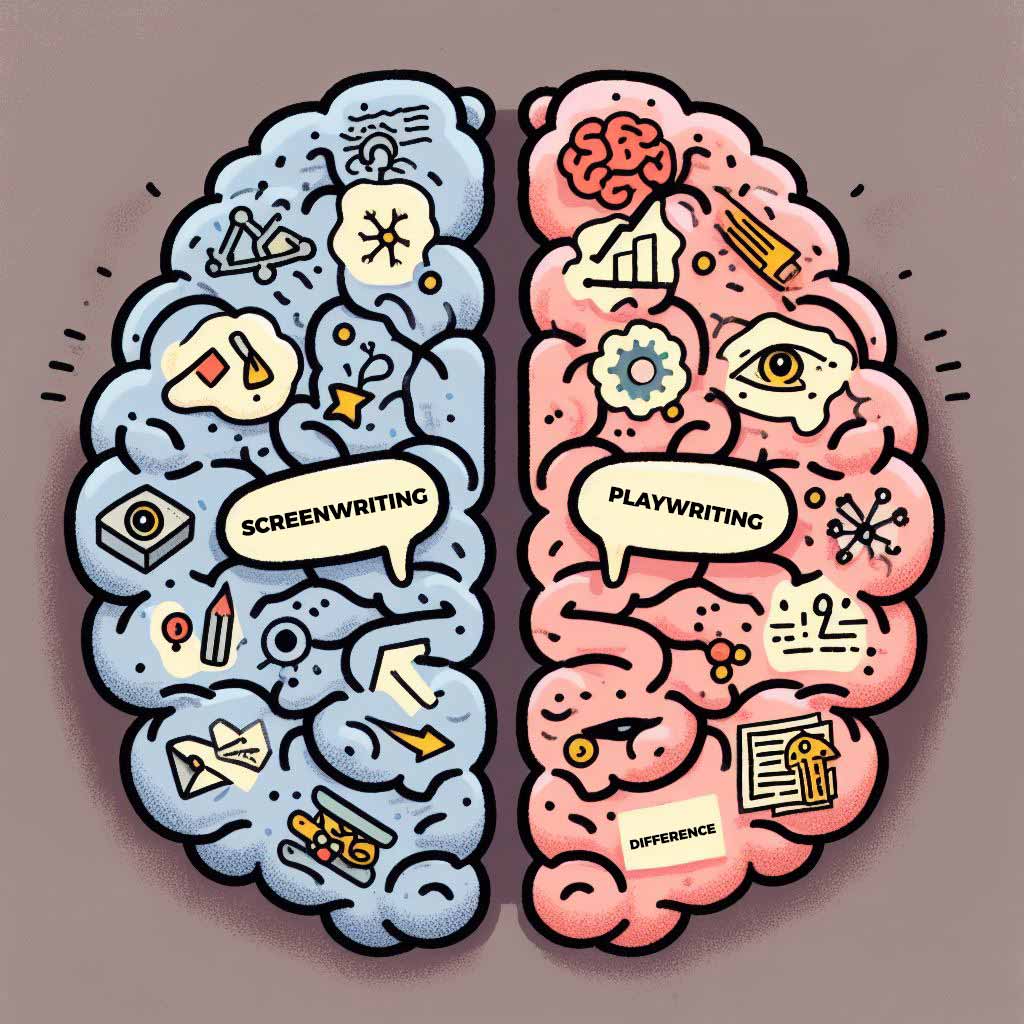Very few forms of writing offer the combination of creativity and business potential as professional screenwriting and playwriting.
Though the craft of storytelling may have core similarities, screenplays, and stage plays demand drastically different skill sets to engage audiences and productions. The technical format, writing style, production considerations, and target mediums make screenwriting and playwriting distinct disciplines.
This guide covers the core comparisons between screenwriting and playwriting by examining key elements like story structure, script formats, and production constraints. Read on to learn if your talents and interests align better towards writing for screens or writing for the stage.

Story Structure Overview
While their presentation differs vastly, screenplays and stage plays both utilize general story structures with roots in dramatic theory to connect with audiences.
The same principles for building narratives around relatable characters, conflicts, and transformative arcs apply whether crafting a Hollywood blockbuster or regional theatrical production. Writers in both mediums must create compelling narratives that resonate emotionally.
Many screenwriters and playwrights utilize a three-act structure to pace stories effectively.
The three acts include an engaging dramatic setup in Act One establishing characters, a conflict heating up through confrontations in Act Two, and a climactic resolution in Act Three. Within this overarching form can exist nonlinear storytelling like flashbacks and other devices if properly motivated.
Great dialogue and dimensional, complex characters drive successful stories regardless of the destination medium. Audiences must connect with characters facing difficult choices, relationship turmoil, or critical lacks in their lives.
As writers develop pitches and draft scripts for either medium, they must filter ideas through questions of conflict and character development rather than rely solely on clever plot ideas.
Answering impactful dramatic questions takes priority over any specific world concepts or hooks. Writers engaging readers to care about “who” rather than merely “what” fosters organic word-of-mouth buzz for their projects.

Playwriting Elements
Within that shared story structure framework, playwrights leverage literary devices like monologues, soliloquies, and stage directions to reveal details about characters and situations.
When scenes show rather than tell details directly, audiences can draw their own conclusions about underlying emotions and backstories. These elements help stage plays feel more self-contained without requiring extensive effects. Playwriting emphasizes character-driven revelations through behavior and dialogue.
Descriptions for a stage play focus more on relaying nuances of expression, gesture, and inflection during conversations with actors and directors through parentheticals and stage directions embedded directly in the script.
As plays have constraints in terms of viable locations, scene descriptions may reference functional set pieces like tables, entry points, and concealed areas rather than elaborate environments.
Playwrights create opportunities for intimate revelations and exchanges by carefully crafting not only what characters say but how they engage physically.
Playwrights retain creative influence over casting choices depending on racial, gender, age, and ability considerations specified during character introductions.
They can shape characters’ contexts through revealed backstories and ethnicities to meet diversity aims or align with specific actors in mind to headline projects.
They also craft dialogue and behaviors tailored for performers of certain backgrounds. Beyond the script, theatrical writers must consider run times, intermissions, and potential budgetary constraints over elements like costuming, sets, and effects.
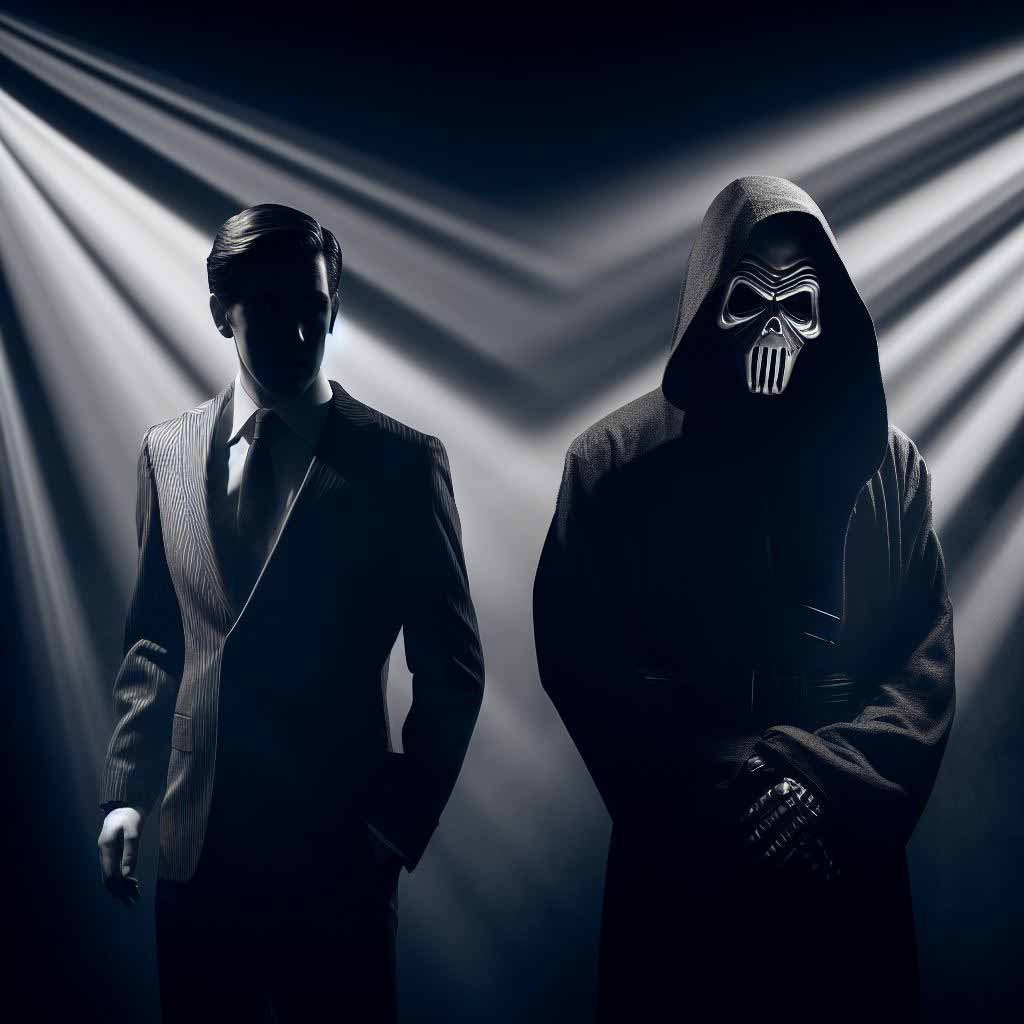
Screenwriting Elements
In contrast, screenwriters focus writing energy on capturing the visual narrative flow that will later be realized by directors and cinematographers.
Scripts interpreted from screenplays must translate effectively from the blank script page to dynamic camera work, auditory cues, opulent production design, and more.
Screenwriters provide a sturdy narrative roadmap that creative departments can riff on rather than dictating every nuance as camera angles, scene transitions, musical scores, and location choices bring words to screens.
Rather than use overt exposition, screenwriters show critical details through what audiences can decipher in costumes, production design, lighting, framing, and editing effects.
Great scripts maximize the capabilities of the medium through visual storytelling. Location moves, sequences across varied international sites, and complex action choreography can enhance films without convoluting character motivations and arcs.
Screenplays follow stricter formats with consistent elements like scene headings, action descriptions, transitions, and camera movement placeholders vital for productions. Scripts represent a fluid symbiosis between the written word and intended visual techniques.
Because of fluid shooting schedules, multi-location capabilities, and digital effects options during filming, screenwriters may exercise some creative license in “writing to budget”.
As long as character arcs remain properly motivated, scripts can enhance commercial potential via ingenious settings, action spectacles, and diverse casting. Writers must still limit arbitrary excessive excesses which strain logic.
Writing collaborators like polish writers and writing teams may assist in developing screenplays to align with executive feedback. Due to its more independent nature, playwriting tends to be an introspective creative process.
Film studios may even recruit writing “doctors” to augment draft scripts facing production hurdles after rights acquisitions.
Technical Format Differences
While both scripts assist visualization in their own ways, screenplays and stage plays exist as utterly distinct formats unto themselves.
Proper script formatting proves mandatory to both getting representation as a writer and clarifying narratives to readers considering productions.
Elements misplaced throw off entire delicate balancing acts. Professional scripts get judged by immediate first impressions before appreciation of subtler nuances.
Playwriting Format Hallmarks
Stage play formatting focuses chiefly on facilitating dialogue exchanges between defined characters while peppering in contextual stage directions and scene explanations.
Scripts comprise mostly spoken lines and minimal scene commentary. As plays translate directly to live performances, the scripts themselves become animated via actors assuming speaking roles.
Playwrights must define every character within the script clearly as part of formatting standards. Unique characterization descriptions should cover general traits to inform casting without being overly prescriptive. Age ranges, accents, mannerisms, and costuming hints provide helpful guidance.
Dialogue formats as dual columns with characters’ names listed above assigned text lines. Parenthetical expressions intermix to indicate tone and intentions, helping actors interpret subtle meanings. Scene changes reference transitions like “lights fade” as integrally as introducing new locations.
Standard playwriting format avoids camera directions outside possibilities for panning spotlights. Creative teams handle staging movement and zoom effects in productions.
Formatting instead suggests setting changes through notes like “JENNY’S APARTMENT – NIGHT”. Other visual details come from stage direction notations pinned to certain characters and moments when helpful. But scripts leave wiggle room for directors and actors to collaborate.
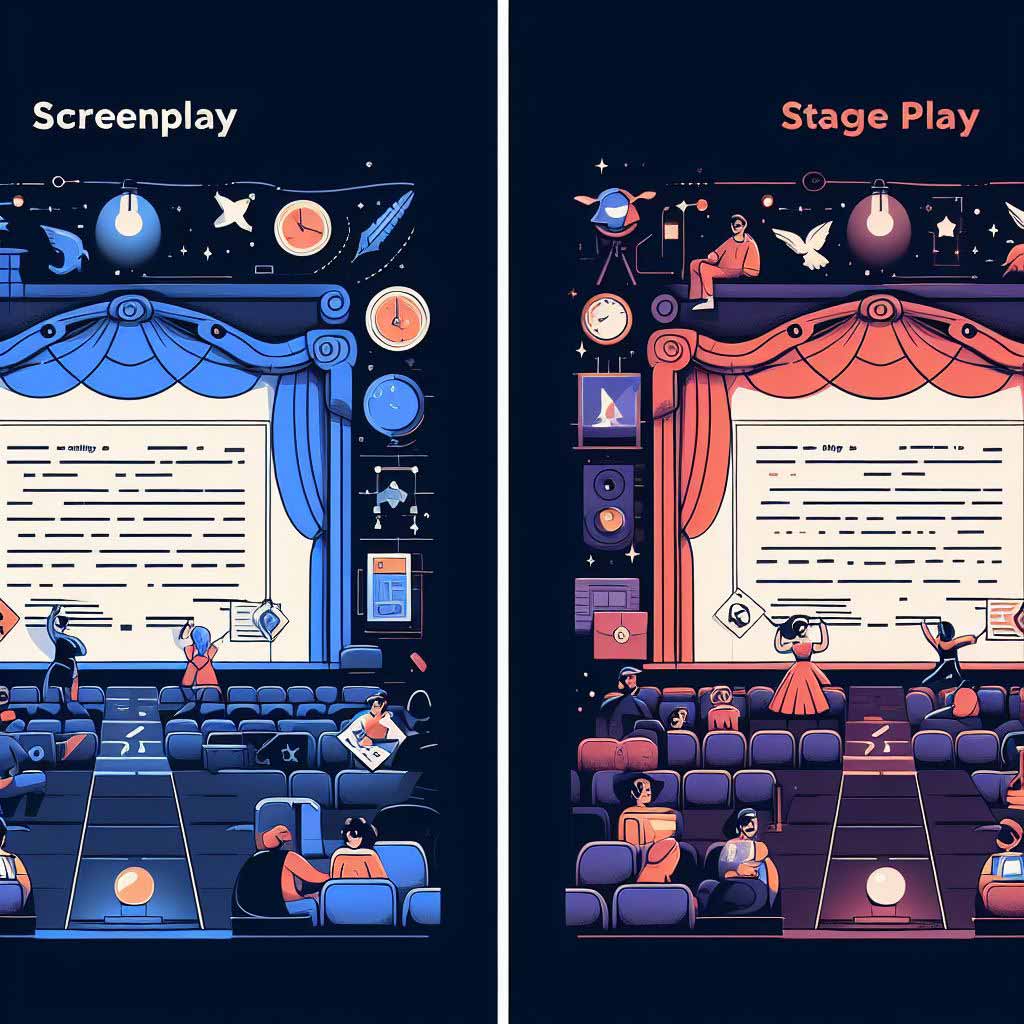
Screenwriting Format Hallmarks
Screenwriting conventions alternately developed around expressing flows between locations, situations, characters, and times of day seamlessly factoring later editing and effects.
The strict industry standard screenwriting format makes scripts easily scannable for executives and creative heads evaluating structure, visuals, and budgeting during preproduction. Though terse in elegant ways, screenplays still hit dramatic beats.
Unique from plays, screenwriting introduces every new scene with a descriptive slug line listing the location and time details. Scene headers like “THE BROOKLYN BRIDGE – NIGHT” set the stage clearly at transitions.
Action lines detail movements and activity context directly below before the dialogue. Similarly, well-formatted scripts articulate vital actions like phone calls and physical conflicts through narrative writing conventions beyond just spoken words.
Camera angles and perspective techniques are referenced parenthetically as screenwriters envision sequences and reaction shots to guide directors. Editing transitions like “CUT TO” or “QUICK FLASH” pace sequences for additional context. Unlike plays, these scripts must work around eventual visualization absent actor performances in isolation.
Even musical accompaniment and effects find placeholder mentions within screenwriting to underscore tone. The strictly codified screenplay formatting serves to translate dramatic stories fully to audiences through both sight and sound encompassing filming locations, actors’ expressions, and complementary postproduction additions in service of the whole.
Production Aspects
Finally, writing successfully in a either professional medium means considering real-world constraints applicable to their final productions to embrace possibilities while avoiding impossible excesses ungrounded from practical realities.
Playwrights connect small-scale character studies to live audiences through performances. Screenwriters help ambitious visions transcend limitations through movie magic.
Playwriting Production Considerations
Streamlined production elements give playwrights latitude to explore intimate themes without effects spectacles risking upstaging key storytelling. Stage plays unfold presentational stories focused on raw human exchanges.
Emotional revelations emerge more from interpersonal dynamics than shock value alterations to environments through lighting or atmospheric flourishes made possible on screens.
Small casts of core characters allow deeper connections over 90-120-minute live viewer engagements. Simplified staging through thoughtful prop and scenic design choices keep productions feasible within budgets.
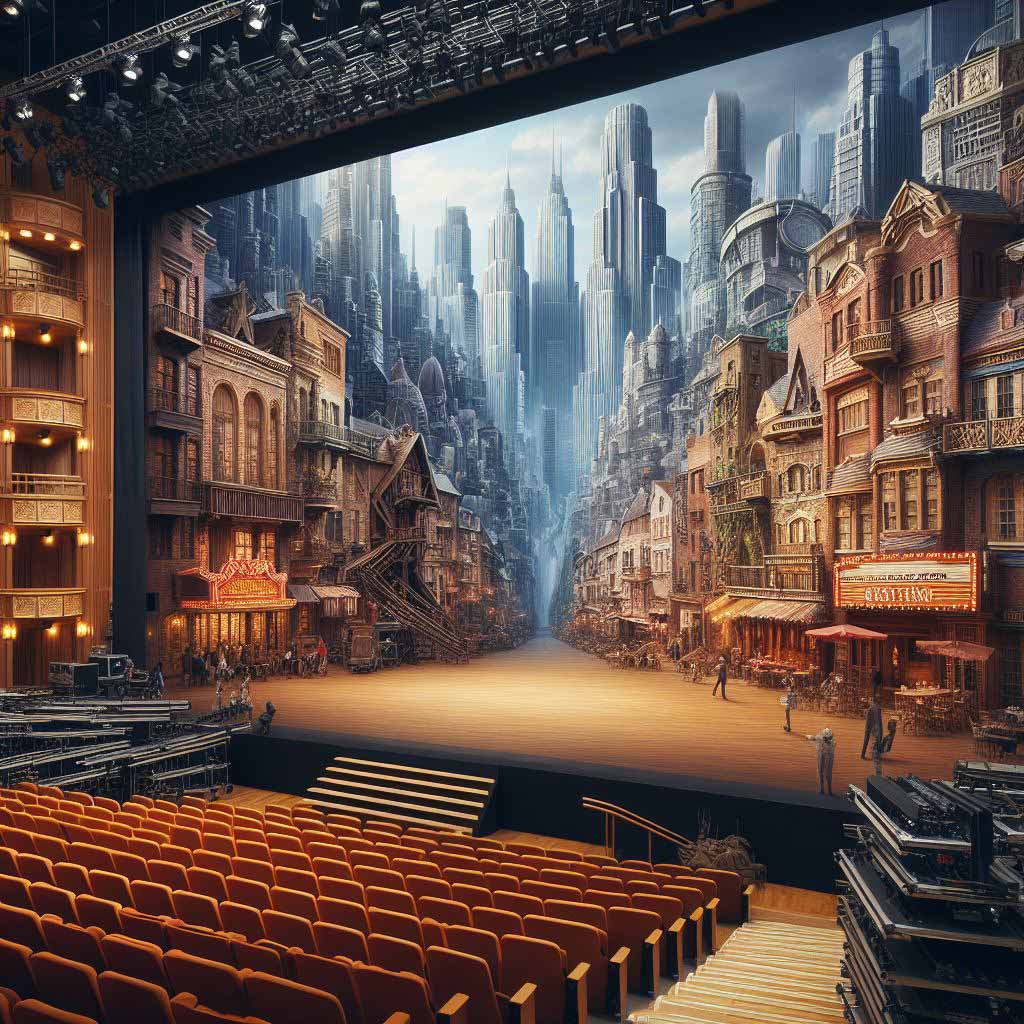
The main ticks come from securing rights for suitable venue spaces and gathering capable acting ensembles meshing well together. Promotion to local arts patrons also factors for playwrights both producing their own small works or trying to attract backing based on script merits.
Unlike Hollywood movies and streaming series, minimal editing exists around stage productions, and transitions happen in real-time viewed from static audience perspectives.
Playwrights therefore focus on pacing through curating scenes and crafting dialogue exchanges that hook viewers. Pivotal story shifts occur via emphatic monologues or subtle mannerisms emerging through actors living fully in their roles aided by proper script direction.
Screenwriting Production Considerations
Meanwhile, screenwriters pen epics free from physical performance or viewer attention span constraints. Cinematic features and premium series encapsulate sweeping visual spectacle well beyond confined theater spaces.
Provided production funding is secured, the cameras and computers driving modern filmmaking seemingly introduce no limit on imaginable settings or special effects.
Yet cinematic writing done properly still grounds fantastic concepts through credible character perspectives. Suspension of disbelief only extends so far without proper plot justifications.
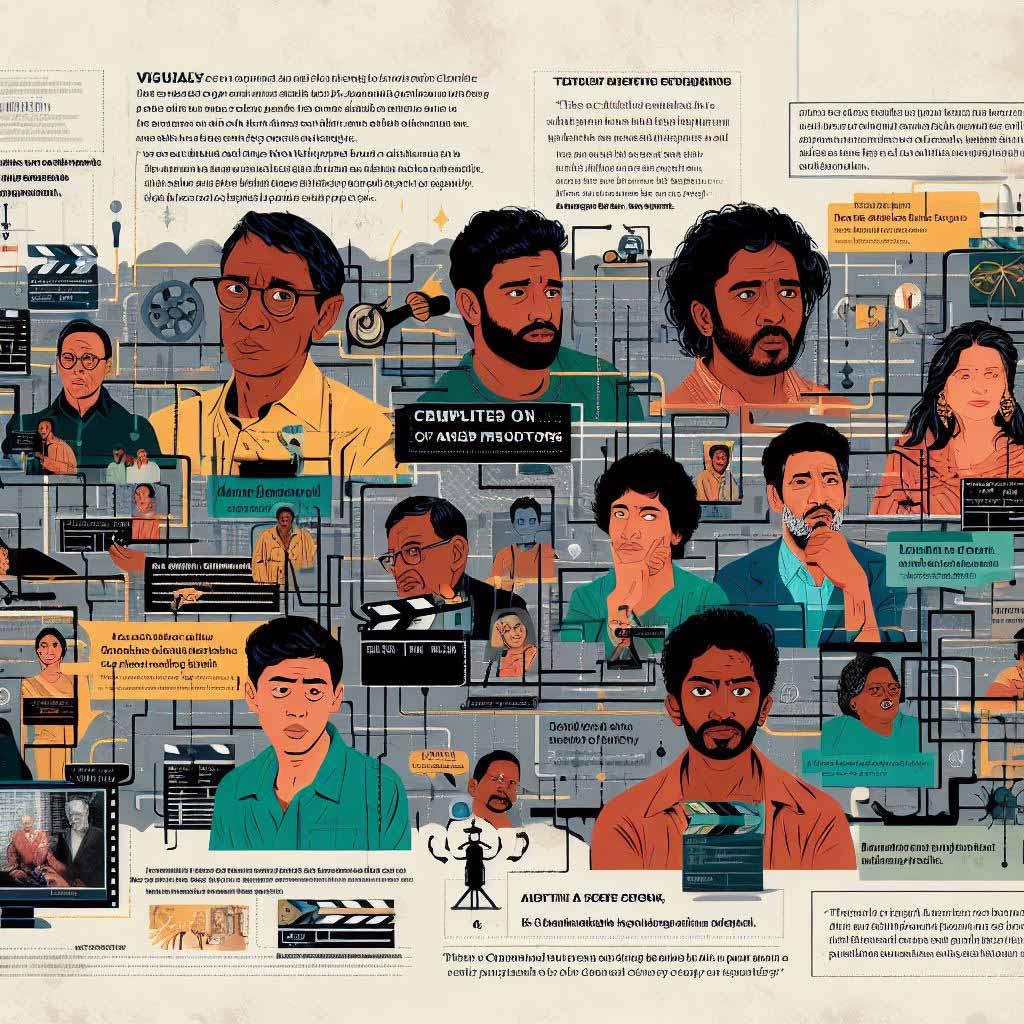
So screenwriters must balance wide-eyed creativity with some commercial considerations around what translates believably on screen for audiences along with budgetary factors that holistic productions account for through location planning, insurance, and casting.
The filming process itself may take many months across scattered sites unconstrained geographically but limited by union issues, technology access, or weather challenges at given remote destinations.
Screenwriters never control the exhaustive collaborative process culminating in box office releases. Actors, directors, and executives impart their own visions refining scripts through improvisations or rewrites. Films edit together completely differently from even well-formatted specs on pages.
Key Takeaways: Essential Differences and Similarities Summarized
While screenwriting and playwriting share foundational tactics for impactful narrative fiction, their target mediums diverge exponentially in what technical script elements receive focus and what fidelity limitations factor for each. Key differences and similarities to recap include:
Differences:
- Screenwriting format intercuts scene descriptions and actions with dialogue whereas playwriting presents mostly direct speech exchanges.
- Camera angles, editing transitions, and sequences are the only relevant techniques within screenwriting.
- Playwrights develop productions around simpler staging constraints while screenwriters utilize huge budgets and locations.
- The playwriting process remains independent as screenwriting requires extensive collaboration.
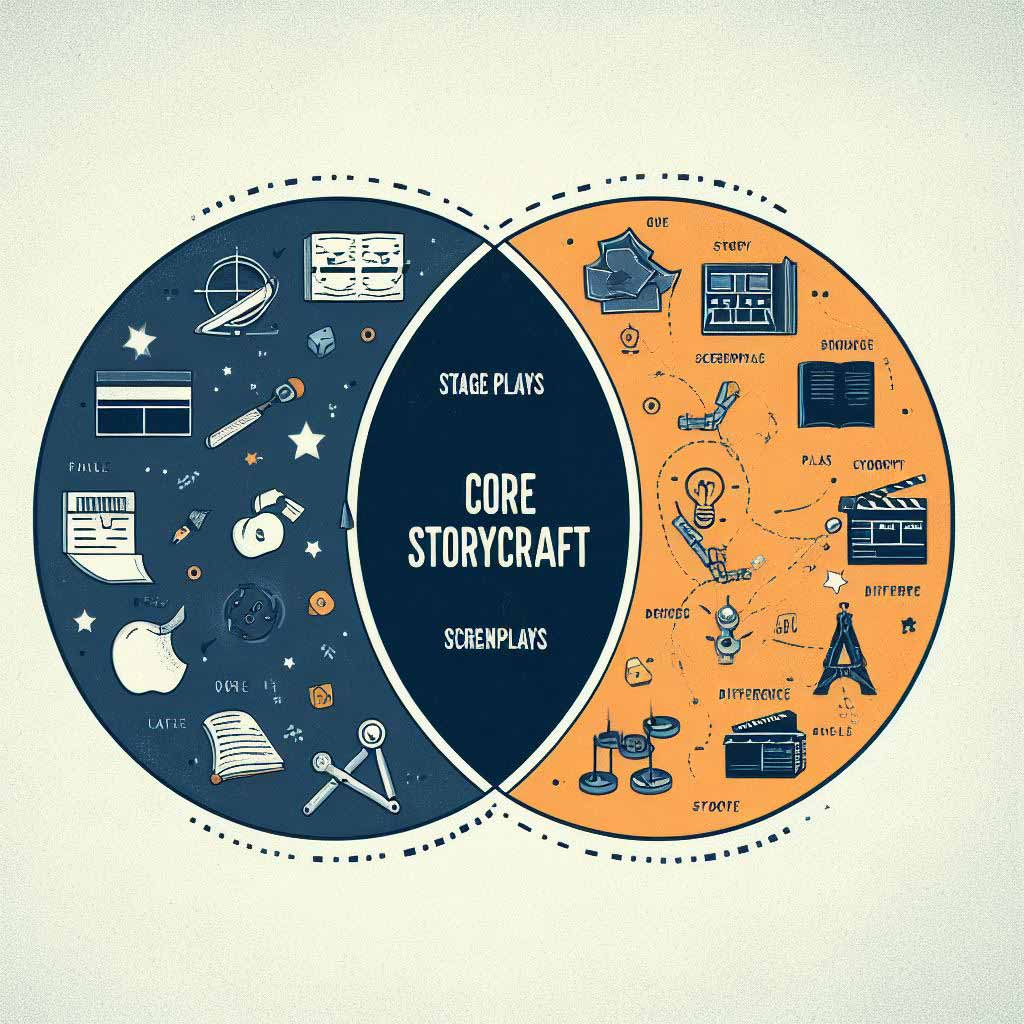
Similarities:
- General story structure principles and engaging characters apply equally.
- Descriptive details set the scene whether expressed through stage directions or scene headers/sluglines.
- Writers in both realms must filter ideas through questions of conflict and character development.
- Performer interpretations bring scripts to life in both mediums, albeit differently.
Should You Write Plays Or Screenplays?
Determining whether to pursue writing for the stage or screens depends greatly on individual creative instincts tied intrinsically to these core medium differences regarding practical production realities.
Playwrights revel in subtleties of human expression through prolonged character studies and resonate with audiences seeking grounded entertainment. Screenwriters craft expansive worlds limited only by imagination and technological possibility to manifest visual spectacle.
While both scripting processes demand creativity and communication mastery, consider how vital worldbuilding beyond core characters rates for your stories. Establish your tolerance for extensive notes collaboration.
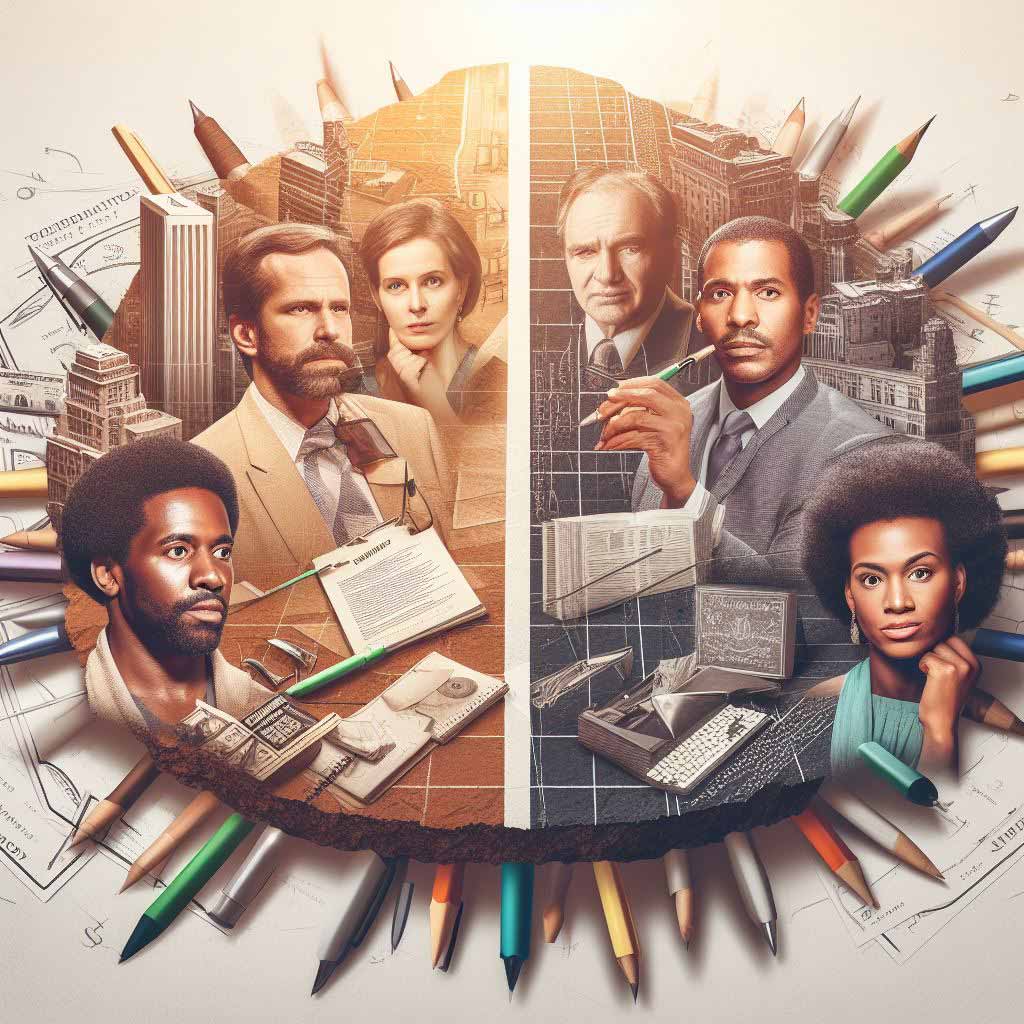
Determine what lengths of narrative engagement best suit concepts. Know your affinity for visual splash versus introspective dialogue when determining perfect professional writing avenues.
Of course, plenty of scribes build rewarding careers bridging theaters and screens applying their skills across mediums. Just recognize the distinctions covered here when setting goals and assessing optimal homes for your creative wordcraft.
Frequently Asked Questions
What’s the difference between stage play and screenplay?
The key differences between plays and screenplays are the script format, production considerations, and how stories are told. Playscripts focus more on dialogue with some stage directions, while screenplays extensively detail scene settings, actions, transitions, and camera work. Stage plays also have simpler production constraints, while films have big budgets for locations, effects, etc.
Does playwriting help with screenwriting?
Yes, experience with playwriting can benefit screenwriting skills. Playwriting helps tremendously with dialogue, subplot integration, character development, and dramatic pacing. The ability to keep audiences engaged without elaborate visuals transfers well. However, playwrights still need to learn screenplay formatting and visual narrative techniques.
What is the difference between a scriptwriter and a screenwriter?
The terms are fairly interchangeable in modern usage. Traditionally, a scriptwriter was considered someone who writes a document containing dialogue and stage directions without being specific to plays or screenplays. But now, the term screenwriter is more commonly used to refer to writers who specialize in crafting film and television scripts and scripts for other visual mediums.
What is the difference between prose and screenwriting?
Prose refers to body text in general, while screenwriting is the specialized technical writing formatting used for film and television scripts. While prose focuses on elaborate textual descriptions and reader visualization, screenwriting communicates visual components more succinctly to show transitions and components integral to actual film production.
What are the 4 acts of a screenplay?
While there are differences in interpretation, many consider the 4 acts of a screenplay to include:
- Exposition – Introduces main characters, setting, and conflict
- Rising Action – Details the obstacles, incidents, and revelations that complicate matters for the protagonist
- Crisis/Climax – The pivotal make-or-break moment; things go irreversibly wrong or the hero solves the issue
- Resolution/Denouement – Loose ends resolve showing how characters, lives, and the world changed
Is it easier to write a play or to write a movie?
Most writers consider plays generally easier starting points over screenwriting. Playwriting allows focusing more intimately on dialogue and emotional arcs. Screenwriting requires both character work and much more elaborate worldbuilding and descriptions translating visually. Short plays can serve writer development better than tackling massive screenplay challenges requiring substantial experience.
Is playwriting harder than screenwriting?
In some aspects, playwriting presents greater challenges. Playwrights have to grab attention and drive intrigue without visual components. They also tailor productions more to actors’ limitations and intimate stage configurations. However, screenwriting generally requires mastering more complex style guidelines around conveying cinematic sequences which most perceive as more difficult to craft successfully.
What is the hardest part of writing a screenplay?
For most writers, the hardest part of writing a screenplay involves visualizing effective cinematic sequences that transition well. It’s comparatively easy to write conversations. But scene settings, actions, transitions, and camera angles take experience translating dramatic ideas to components that compellingly lead audiences from one story beat to the next.
Is screenwriting harder than novel writing?
There are certainly arguments on both sides. However, overcoming creative blocks proves easier for novels since writers can be more flexible in adding and expanding textual content. Novelists don’t worry about specifying locations/actions. Conversely, even acclaimed novelists may struggle with the strict screenwriting conventions around industry formatting and visual narrative components.

